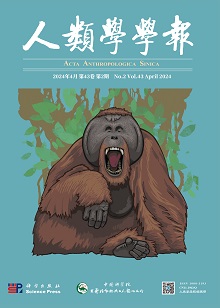In this paper, human bone remains excavated from the Yulongwanan site, an architectural site of Ming Dynasty, in the southeast Kaifeng City were identified, and the human bone specimens (R2, R3, R5, R6, R11 and R12) with premortem traumas were used as research materials to distinguish the marks of chopping, smashing, cutting and burning on human bones. The marks were measured with a vernier caliper, including maximum length, width and depth. Three traits of type, location and quantity for describing the morphology of the marks were recorded. According to the macroscopic and microscopic criteria of indirect heat exposure at low temperature, the surface morphology of human bones in containers was observed and analyzed respectively by naked eye and scanning electron microscope (SEM). The results showed that: 1) R6 (female, 40~45 years old) in an supine extended position, which was shallowly buried in the Ming culture layer, only had multiple chopmarks on the skull, but the postcranial bones were complete, so it is unclear why the skull was chopped; 2) R3 (gender unknown, about 9 years old) lied on its right side with flexed limbs in the silted clay layer; the postcranial bones were complete, so two smashmarks on R3’s skull could have been caused by bricks’ or beams’ hitting when the house collapsed; 3) The human bones in containers (R2, R5, R12) and house (R11) showed signs of violent hacking and mutilation. The micromorphometric analysis of cutting and chopping marks on human bones suggests that these marks occured in slaughtering of fresh bodies. Scanning electron microscope (SEM) images also indicated that R2 and R5 presented the diffusion and degradation of collagen fibrils, smooth and compact surfaces, and closed bone pores. The low temperature burning of R12 made collagen degrade, formed gelatinous mass, and made the pores indistinguishable. Those bones (R2, R5, R12) were significantly different from R11, which had the hierarchical structure, typical of cortical bone morphology. Therefore the human bones in containers were supposed to be heated at a low temperature. The bones of R2, R5, R11 and R12 shared a number of characteristics that had come to be recognized as baseline criteria for identifying cannibalism in the archaeological record: Lack of formal burial, under-representation of bones, extensive perimortem lesions, and burning. These bones can be used as the evidence of cannibalism, which corroborate the human tragedy recorded in historical data from the perspective of bioarchaeology. The human bones unearthed from the Yulongwan Ming Dynasty architecture site may be the most credible evidence of cannibalism, which provide anthropological data for understanding deeply the cannibalism of ancient human and the social history of the Ming Dynasty.











